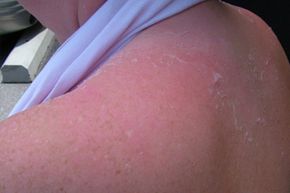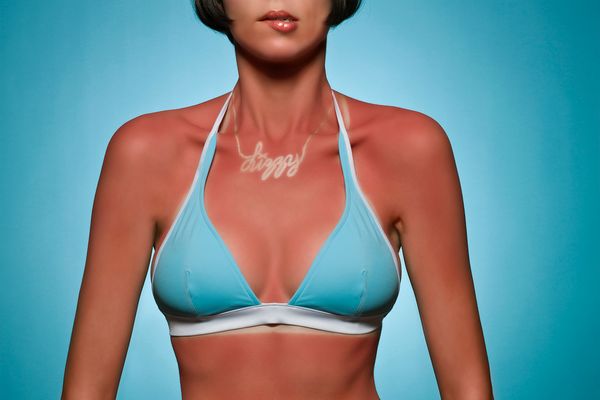When it's warm outside and the sun is shining, you might be tempted to head to the beach and swim, play a volleyball game or just lie in the sand. Before you indulge in these activities, however, you should make sure to protect your skin. Skin that's exposed to the sun is susceptible to sunburn, which can cause painful redness and even blisters. To prevent sunburn and sun blisters, use a sunscreen with a sun protection factor, or SPF, of at least 30.
Blisters occur only in severe cases of sunburn. Sometimes they're accompanied by swelling. A blister is a bubble under the skin that's usually filled with fluid. Blisters can be uncomfortable and unsightly, but don't pop them. Blisters form to protect the skin, so it's best to keep them intact for as long as possible. If a sun blister pops, make sure to keep it clean and dry so it doesn't get infected.
Advertisement
Preventing sunburn and blisters is easy. The sun shines most intensely from 10 a.m. to 4 p.m., so don't spend too much time in the sun during the late morning and early afternoon. You should put on sunscreen half an hour before you go out in the sun so it has time to soak into your skin. Reapply sunscreen every two hours, especially if you've gotten wet or sweaty. Also remember that clothing protects you by keeping your skin covered, and hats provide shade to protect your face. Some companies now make UVA- and UVB-protective clothing, so do some research if having this type of protection interests you.
As long as you take the proper precautions to protect yourself, don't worry about enjoying bright, warm, sunny days outdoors. But don't forget to take care of your lips -- which have the thinnest skin on your body. For more information about how sun blisters can affect your lips, keep reading.
Advertisement

